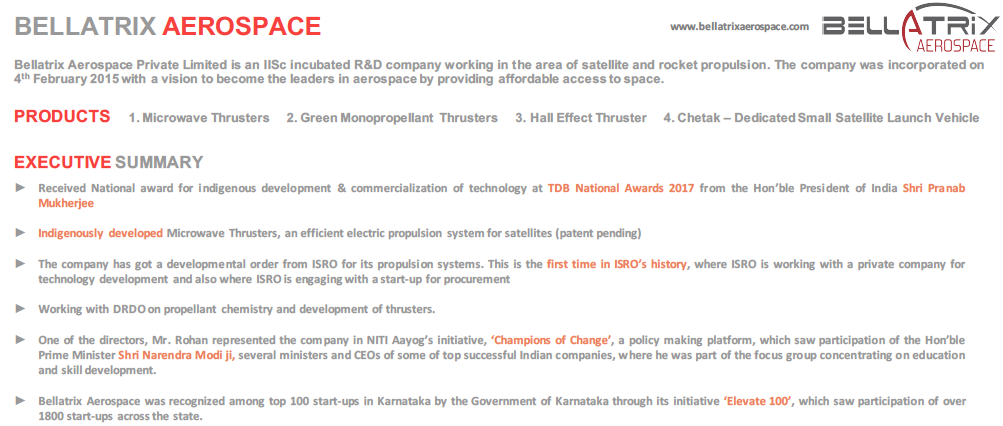Bellatrix Aerospace
| Showcase | Criterion |
|---|---|
| Showcase articles feature products, start-ups or service providers that IoTForum Editors consider impactful, innovative or successful. They will focus more on technology, business model and learnings for the wider ecosystem. We are starting with IoTnext 2017 Award winners and special mentions. If you consider that your offering should be covered send a draft to IoTForum using contact us option | Bellatrix was a special mention at IoTNext 2017 |
Space offers vast potential for humans but the biggest barrier to space exploration is cost of access to space.
Bellatrix Aerospace Private Limited, an IISc incubated R&D company working in the area of satellite and rocket propulsion, is trying to address this barrier. The company was incorporated on 4th February 2015 with a vision to become the leaders in aerospace by providing affordable access to space. The company has developed an electric propulsion system (patent pending) — the Microwave Electro-thermal Thruster (MET) — which it claims is more efficient than traditional chemical thrusters as it provides a higher ‘mileage’ and lasts longer. This is an efficient electric propulsion system and has a unique distinction of being able to efficiently work on several propellants such as Argon, Xenon, Nitrogen, Ammonia and Water Vapour. MET is an electrode less (zero erosion), vortex stabilized thruster where microwaves are used to heat the propellant and produce a high temperature exhaust for in-space propulsion.
The company is also developing two launch vehicles Garuda and Chetak. Garuda is an affordable launch vehicle that falls in the medium lift category. It's a two-stage rocket designed for complete re-use and will employ carbon composites in more than 80% of its construction. Chetak is simple and reliable dedicated nano-satellite launch vehicle with an aim to make nano-satellite launches more affordable than ever before. Chetak is a two-stage vehicle, where the first stage is designed for reuse. Both the stages of Chetak will use liquid methane as fuel. Chetak features an all-carbon composite construction.
The company, dedicated to offer its customers high reliability, short wait periods and competitive costs, believes its systems will help it reduce satellite cost and make space access affordable.
References:
